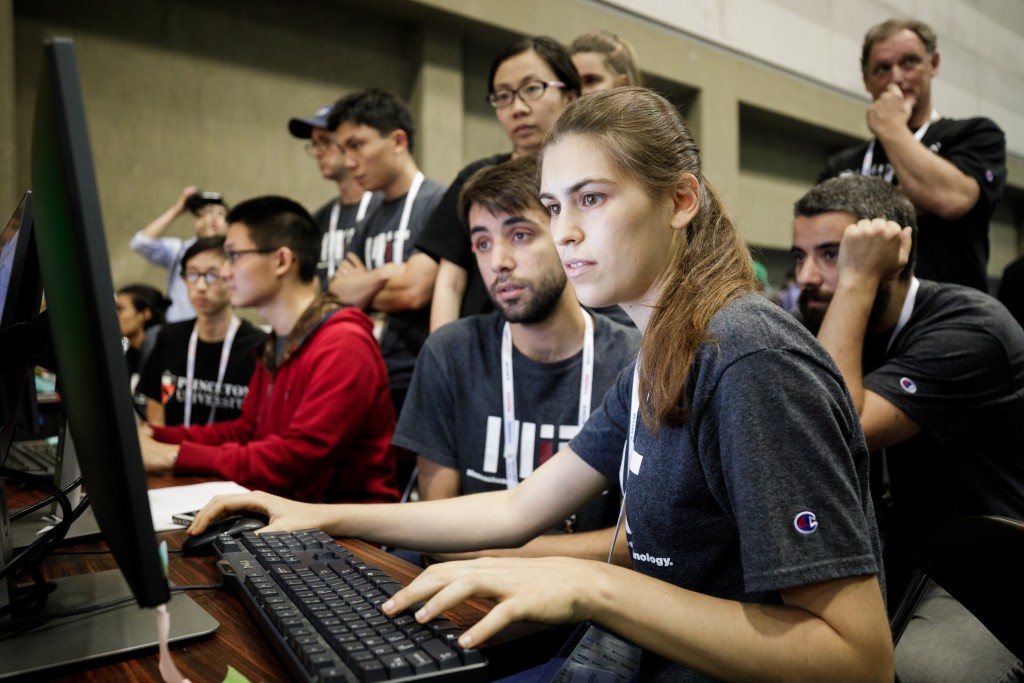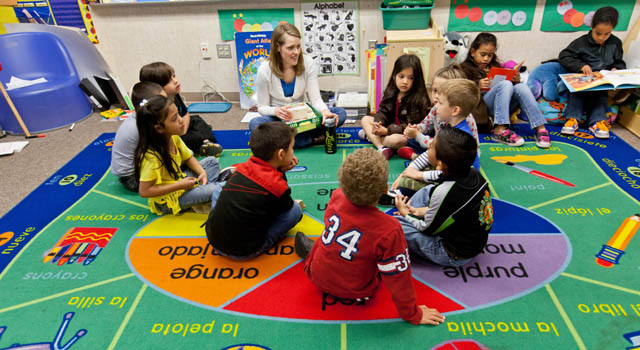Page 181 • (3,668 results in 0.036 seconds)
-
Abbreviations denote those courses which fulfill the General Education Program Elements (GenEd). The PLU Core FYEP 101 (FW) FYEP 102 (FD) The Academic Study of Religion (RL) Fitness and Wellness (FT) Global Engagement (GE) The Distributive Core: Ways of Being and Knowing Creative Expression (CX) Engaging the Natural World (NW) Interpreting Text (IT) Examining Self and Society (ES) Exploring Values and Worldviews (VW) Quantitative Reasoning (QR) Integrative Learning Culminating Experience (SR
-
their local watershed and more broadly, environmental issues, would be a great learning experience for everyone involved. Sincerely, Grayson Peet
-
Dr. Colleen Hacker takes her class outdoors. (Photo: John Froschauer/PLU.) New Banners on CampusHave you noticed the faintly medieval yet very contemporary banners on campus? Each one presents a core element of Lutheran education as practiced or valued at PLU: Critical Questioning, Protecting Freedom, Liberating Study, Learning Together, Care for Creation, Discerning Vocation, Service to Others, Globally Engaged. Each of the eight terms is inspired by the faculty and staff produced booklet Core
-

, Larios has been fighting against stereotypes her whole life. Neither of her parents finished high school and she didn’t learn to speak English until kindergarten when, after becoming lost during a spelling lesson, she started taking English language acquisition (ELA) classes. “Our school nurse was actually the teacher and she would sit the three of us down — me, my cousin, and my uncle, who was in the fifth grade — two to three times a week, every week, until fifth grade,” she recalls. Larios
-
conveyed to the world in the best-chosen language. Now, had the same young lady been engaged with a volume of the Spectator, instead of such a work, how proudly would she have produced the book, and told its name; though the chances must be against her being occupied by any part of that voluminous publication, of which either the matter or manner would not disgust a young person of taste: the substance of its papers so often consisting in the statement of improbable circumstances, unnatural characters
-
. BME A 30-minute (minimum) recital of at least two complete works in contrasting style prepared to a level appropriate for public performance Collaborative repertoire may be included, but must be in addition to the 30 minute minimum time VOICE BM A full recital (60 minutes of Music) in a variety of styles and languages; students should display an understanding of foreign language translation, an advanced understanding of stage deportment, and a thorough understanding of musical style. BME A Half
-
taught there for eight years, helping to grow a program of around 200 string students to a program which now serves more than 1,000 students. During that time, she also coached for the Tacoma Youth Symphony and conducted the Rainbow City Orchestra in Seattle. Jerilynn now lives in Spokane where she teaches orchestra and music theory at 4-8 gifted school, as well as general music in a Spanish language immersion program housed in the same building. Jerilynn was hired as the new Sinfonietta conductor
-

is also the largest provider of cloud computing infrastructure services, which accounts for much of its revenue and future potential. Amazon’s Seattle Campus (Photo by Chad Slattery) However, for those interested in computer science research, artificial intelligence (AI), and natural language understanding (NLU), the company offers an incredible array of engineering and cognitive research opportunities—right in our back yard. A Meet-and-Greet with Alexa Since its public debut in late 2014, I have
-

excited and happy to be here,” said Cindy (Chipman) Miller ’88, a learning specialist. “I think the more people we have involved in our school the better.” In many ways, current PLU students who volunteer at the school do the same. Through engagement like the Big Buddy program, college students buddy-up with elementary school students to help mentor, nurture and live an example of what is possible. They give students a glimpse into who college students are, what is possible through education and show
-
explorations of their identity, culture, and strengths, and how to weave these into an individualized education plan. Participants have many opportunities to meet healthcare providers and researchers whose work addresses reducing health disparities. SHPEP at the University of Washington utilizes a range of teaching styles including lecture, active learning techniques, discussion groups, self-reflection and virtual hands-on activities to increase student engagement and learning. This year the program will
Do you have any feedback for us? If so, feel free to use our Feedback Form.


